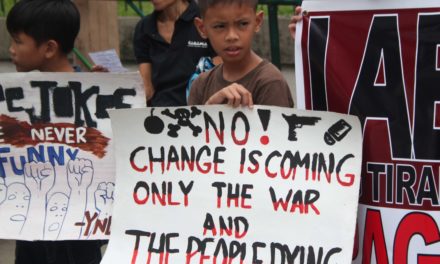The failure that has marked the end of the summit of G7 finance ministers on 4th and 5th of February had to be covered up with empty declarations. The final communiqu้ is just another step in a direction that has already shown itself to be far wide of any real intention to totally cancel the debt.The G7 has just announced debt reductions of “up to 100%” to be negotiated on a “case by case” basis. “Up to 100%” means nothing at all, since any percentage of reduction falls necessarily below 100%. The decision to treat countries “case by case” will inevitably lead to conditionalities aimed at reducing the effect of whatever reduction is finally conceded. This is unacceptable. Nothing has been done to initiate any real cancellation; no such plan has been drawn up. It is as though the rich countries had tried to agree on a few well-chosen phrases that would commit them to as little as possible. It would be far better if they began by explaining why previous commitments were not kept. Since 1999 they have not kept their promises. Why should anyone believe they will now?
Tony Blair, Gordon Brown, Jacques Chirac and Gerhard Schroeder are the very same statesmen to whom, six years ago, over 17 million signatures were presented for the abolition of the poor countries’ debt. Yet on that day, 19 June 1999, the G7 summit in Cologne decided to enhance the initiative for the 42 highly indebted poor countries (HIPC) launched in 1996. They claimed they had understood what those millions of signatories wanted, and announced that they were cancelling 90% of bilateral(i) and multilateral(ii) debt for the countries concerned, worth a total of $100 billion(iii). The figures say it all: 6 years later the overall debt of the 42 HIPC has not been reduced, quite the opposite. According to the OECD (Organisation for Economic Co-operation and Development), between 1999 and the end of 2002, the HIPC’s multilateral debt increased by $10 billion and their bilateral debt to industrialised countries by $2 billion(iv). According to UNCTAD (United Nations Conference for Trade and Development), the countries concerned are to repay $2.6 billion in 2005, which is more than the $2.4 billion of 2003(v). In reality, the HIPC initiative was about tightening the creditors’ stranglehold on these countries’ economies through the logic of structural adjustment – about opening up the HIPC economies to export and the interests of multinational corporations; about privatising water, telecommunications, electricity, the few existing publicly-owned industries; and about making people pay for health and education. The same logic of subjugation to the financial markets that operates today.
This weekend’s G7 discussions only concerned the multilateral debt of the 42 HIPC, estimated at $80 billion. Now, the IMF’s gold reserves would be valued at $44 billion at present rates, and the World Bank’s reserves at $31 billion. If they really wanted to, the two Bretton Woods institutions could easily afford to finance the cancellation of the 42 HIPC’s multilateral debt. Those countries’ bilateral debt to the industrialised countries comes to $30 billion dollars. The cost of 6 months’ occupation of Iraq, or 5% of G7 annual military spending. Total and immediate cancellation is, then, a simple matter of political will. So much for the G7’s bluster.
Their bluff has to be called. The G7 leaders have a hidden agenda – to keep the 42 HIPC and the other developing countries (165 in all) in their debt so as to dictate their neo-liberal policies. Only a few HIPC, the most docile or those of strategic importance, will continue to receive any significant debt reduction. But one thing is sure: the G7 has no intention of freeing them of their debt burden, which would mean giving them the chance to carry out economic and social policies that go against the neo-liberal creed.
As for the rest of the developing countries (89% of the poorest populations of the world are in countries other than the HIPC), the G7 is not offering any reduction measures – not even for the countries worst hit by the tsunamis of 26 December last (such as Indonesia or Sri Lanka). All they are being offered is a laughable one year moratorium.
In Porto Alegre on 1st February, at the end of the 5th World Social Forum, all the international movements campaigning against the debt, including the CADTM, demanded: “the immediate and unconditional cancellation of the illegitimate external debt of the countries of the South, starting with the countries hit by the tsunami and other disasters and crisis in recent months”. Only a radical change of attitude will provide a solution to the debt problem. Today, because of the G7’s repeated failures, the problem remains undiminished. Gordon Brown’s posturing should fool no-one.
Damien Millet is the President of CADTM France, Eric Toussaint President of CADTM Belgium (Committee for the Abolition of the Third World Debt). They are the co-authors of “The Debt Scam”, VAK Publication, Mumbai, 2003 and “Who Owes Who? 50 questions on World debt”, Zedbooks, London, 2004.
Notes
i. Contracted towards other States.
ii. Contracted towards multilateral institutions such as the International Monetary Fund (IMF) or the World Bank.
iii. At the G7 held in Naples in June 1994, the rich countries promised 67% of debt cancellation; at the G7 in Lyon in June 1996, they promised 80% of cancellation; the G7 in Cologne in June 1999, announced 90%; in July 2005 in Scotland, no doubt promises will reach 100%.
iv. OECD, Statistiques de la dette ext?rieure 1998-2002, Paris, 2004, p. 203.
v. UNCTAD, Le d?veloppement ?conomique en Afrique. Endettement viable: Oasis ou mirage ?, Geneva, 2004.









